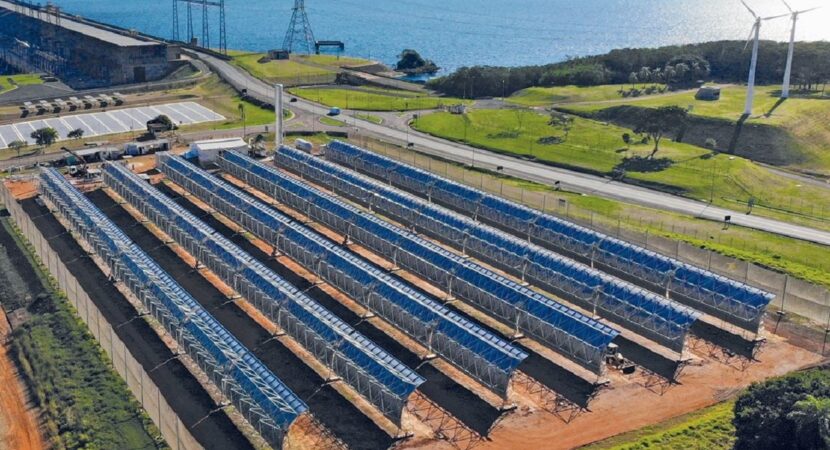
This type of energy converts solar energy into heat, while photovoltaics convert light into electricity. This project cost BRL 49 million and should start operating by the end of the month
Before January ends, Eudora Energia shared on its website, with a report by the Energy Channel, the first heliothermic power plant to start operating in Brazil. The millionaire project has 0,5 MW of power and is located at Cesp's Porto Primavera HPP. Investments to build the plant amounted to BRL 49 million, arising from a Strategic Research & Development Program of the National Electric Energy Agency, started in 2017.
Other news:
- The largest warship in the history of the Brazilian Navy, was sold for the price of a Porsche to become scrap metal
- Private railways: after more than 100 years, the government authorizes the insertion and construction of new projects, with more than R$ 50 billion in investments
- Curriculum vitae and work portfolio in hand to compete for job openings to work on the construction of a Wind Complex in Bahia
According to Eudora's partner Jonas Gazoli, the company started operating with this technology in 2015. Porto Primavera's heliothermal plant converts solar energy into heat, while photovoltaics convert light into electricity. Large parabolic mirrors capture the sun's rays and concentrate the energy by heating a thermal fluid. This fluid is used in a boiler generating steam, which moves a turbine that produces electricity.
Aerial view of the heliothermic plant in Porto Primavera
According to Jonas, this technology allows low-cost storage in a thermal medium, which is a great advantage compared to solar photovoltaics. At the Porto Primavera heliothermal plant, the thermal energy will be stored in a 23-meter-high tank with the fluid. “This oil is heated with the heat of the sun and is stored there. Our thermal energy is stored in the oil,” he explained. This fluid is considered non-polluting and, in case of leakage, it happens in the form of steam.
This way of storing makes it possible for heliothermal technology to be dispatched. According to Gazoli, this is the advantage of this source: it is an intermittent one with the capacity to be firm due to the control of the storage dispatch.
In addition, another advantage reported by the partner is that the operation of heliothermal technology can be used to increase the efficiency of thermal generator parks, biomass or industrial steam chain. “There are UTEs in which the biomass efficiency is lower than the design efficiency, so we could put a heliothermal plant on the side just to generate steam”, he concludes.
Jonas also informed that currently the company also has a national product of its own development, which is a heliothermic collector. Such equipment is engineered and manufactured by the company and is being installed at a headquarters in Furnas, in Aparecida de Goiânia (GO). The goal is that, as of the second half, the product will be available on the market for the operation of new centralized generation plants, electricity and steam generation for industry in general.
Mature and operational technology
Although the heliothermal source is dispatchable, it has a higher cost than the traditional solar source and does not yet present market demand, in addition to not being part of any incentive plan. Jonas Gazoli considers the project for the Cesp plant to be the starting point, and believes that it will open doors to new opportunities. “We have mature and operational technology, a national product, our own engineering. We are now in a position to start fostering the market”, he points out.
In the rest of the world, in countries such as Spain, the United States and the Middle East, heliothermal is already widespread, with plants in operation. China should be the next nation to invest in the segment.
Opting for Porto Primavera was strategic, since there is a Cesp laboratory headquartered there and it is in an interesting region in the state for the operation of heliothermal technology.












